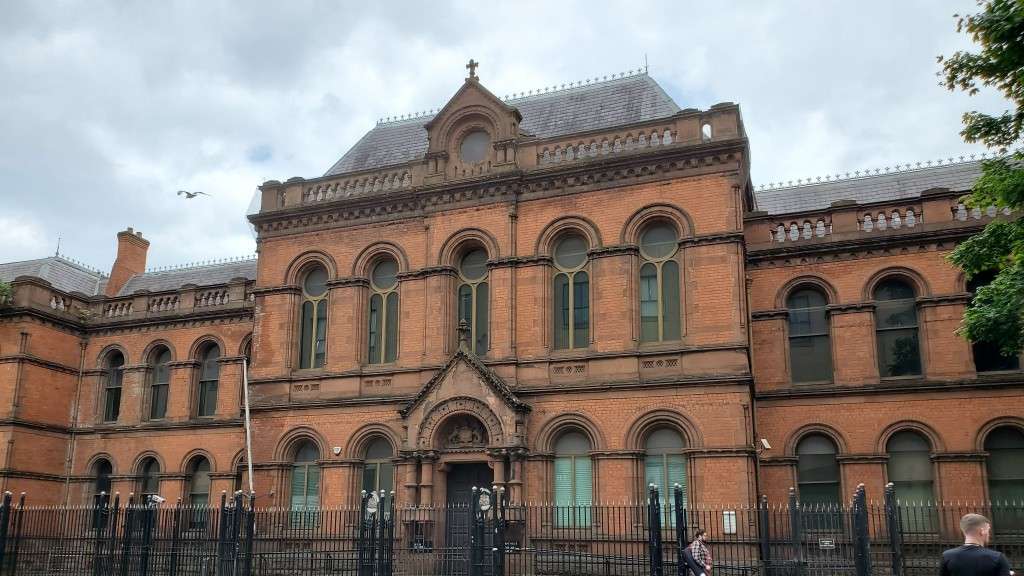Building of the Month March 2024: Old Town Hall, Victoria Street, Belfast, Northern Ireland, BT1 3FA

Built in 1869-71 by Anthony Jackson as Belfast’s first town hall. The building’s red-brick facade, which faces Victoria Street in Belfast’s city centre, combines a Palladian composition with Romanesque carvings. The facade is dominated by round-headed windows linked by a continuous red-sandstone sill course and punctuated by sandstone quoins. A decorative gabled entrance on the central pavilion is supported by colonettes.
Jackson was the winner of a competition to design the building in 1869. His initial, more restrained design was modified after public demand for a parapet and greater ornamentation. In addition to accommodating the town’s municipal offices, Jackson’s plan incorporated a police court and recorder's office located at the building’s rear.
Belfast was rapidly expanding in the late nineteenth century, commercially, industrially and in terms of of its population. Within seventeen years, it had outgrown the town hall. Upon receiving city status in 1888, Belfast’s municipal functions were moved to the newly built and much grander Belfast City Hall (1906). From this point onwards, the Old Town Hall experienced a turbulent time with frequent alteration for different uses, from a warehouse for David Allen & Sons Ltd printing company in 1910 to use by the Belfast Educational Committee (1927 onwards). From 1913-1927, throughout the Home Rule Crisis and First World War, it was occupied by the Ulster Unionist Council. As a result of this history, the building was targeted during the Troubles. After severe bomb damage, the building was restored in 1985 and a significant amount of the building’s historic fabric has survived.
The Old Town Hall has been vacant since 2020, despite being recognised as a building of historic and architectural value (listed Grade B1). It is beginning to deteriorate, notably with vegetation growth on the parapet and signs of water ingress. A Conservation Management Plan has been in development since 2020 but the building’s future is uncertain.
